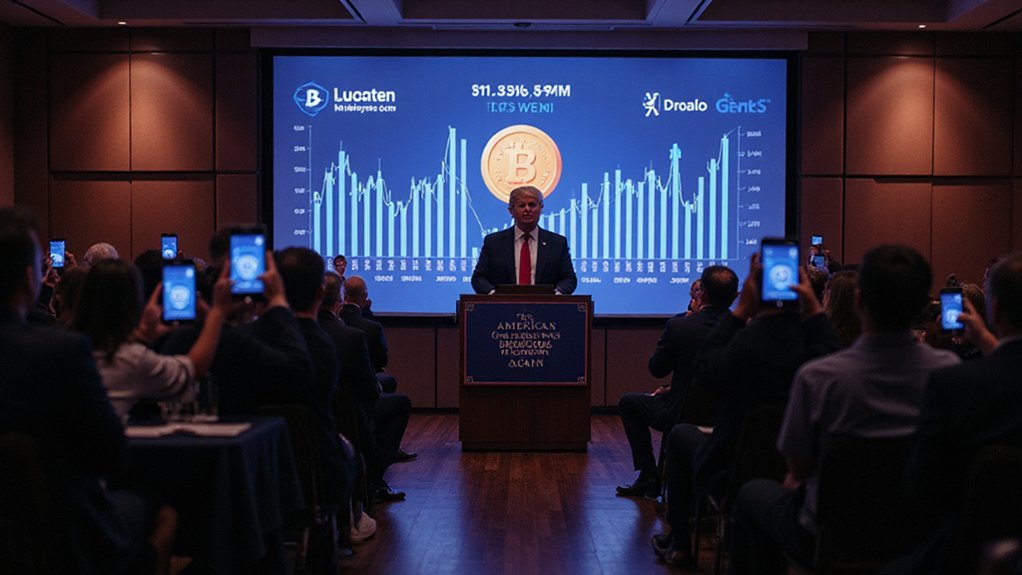The venerable Black-Scholes equation—that elegant mathematical construct which revolutionized options pricing in traditional markets—has found itself thrust into the wild west of cryptocurrency trading, where its fundamental assumptions face a stress test of truly impressive proportions. Originally designed for European-style options and predicated on the geometric Brownian motion of asset prices, this mathematical juggernaut now underpins billions in daily crypto derivatives trades despite questionable adherence to its core assumptions.
Black-Scholes meets crypto: financial elegance colliding with digital chaos in a mathematical showdown of unprecedented scale.
In the digital asset space, the equation’s six variables—volatility, asset price, strike price, time to expiry, risk-free rate, and option type—require substantial recalibration. Crypto’s notorious 24/7 trading cycles demand adjusted volatility measures, while stablecoin lending yields serve as imperfect proxies for traditional risk-free rates. The equation’s presumption of lognormally distributed future prices seems almost quaint when confronting Bitcoin’s fat-tailed reality. The formula’s reliance on constant risk-free rate is particularly problematic in the crypto markets where interest rates can fluctuate dramatically.
Market practitioners operationalize Black-Scholes through a workflow encompassing real-time data collection, theoretical price computation, market comparison, trade execution, and post-trade convergence analysis. This seemingly rational process, however, encounters significant headwinds in crypto markets—sudden regulatory shocks, extreme illiquidity in out-of-the-money options, and the esoteric influence of miners and validators (entities without direct parallels in traditional finance). Day traders applying this model often rely on technical analysis across multiple timeframes to identify optimal entry and exit points. The model’s application in cryptocurrency trading accurately reflects the European style options assumption, as crypto options are typically exercisable only at expiration.
Bitcoin quarterly options exemplify the equation’s adaptation, with market makers employing shortened volatility windows (14-30 days) and constructing multi-expiry volatility surfaces to compensate for crypto’s peculiarities. The model’s inadequacies have spawned numerous alternatives: binomial trees for American-style exercises, Monte Carlo simulations for path dependency, and even machine learning hybrids attempting to forecast volatility.
The irony remains that despite its theoretical limitations, Black-Scholes continues its dominance in crypto—a mathematically rigorous model thriving in perhaps the least mathematically predictable market ever created. As crypto markets mature, this elegant equation persists as both an essential pricing tool and a reminder of the gap between financial theory and market reality.








